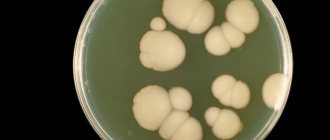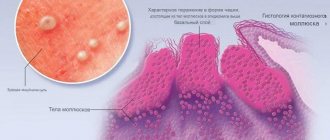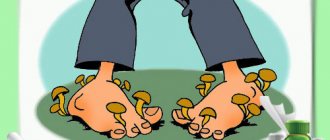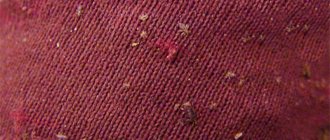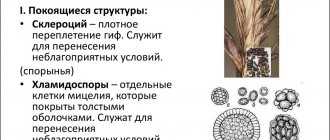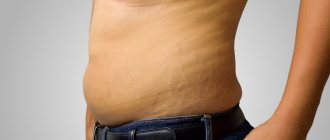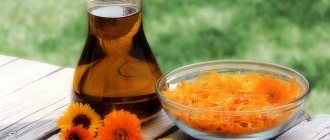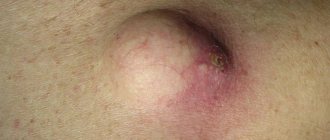Mushrooms are constant companions of humans. Thus, a fungus of the genus Candida lives in virtually every person. As long as everything is in order with the immune system, such a neighborhood is not dangerous. But as soon as any malfunction occurs in the body, the mushrooms begin to actively multiply, ceasing to be “peaceful neighbors.”
Reproducing by spores, the fungus is easily transmitted through the air or through household contact. At the same time, the spores are very “tenacious” - they persist for a long time on clothes, bedding, hygiene items and are ready to become active at any time.
What to do to prevent the colonization of pathological microorganisms and how to cure hair fungus so that the disease does not return again and again - we will understand the symptoms, diagnosis and treatment features.
What is a fungus
A group of microorganisms that parasitize the skin and its stratum corneum (hair and nails) are called dermatomycetes, or dermatophytes. They readily master keratin-containing substances.
Mushrooms are essentially heterotrophs, that is, they use ready-made organic substances for their nutrition. Their digestion is external. This means that all waste products of fungi end up on the skin and mucous membranes of humans. Forming entire colonies, they penetrate the epidermis and provoke inflammation. In this case, healthy cells die, including the hair follicle, which often cannot be restored after successful treatment.
Contagiousness of the fungus. Prevalence
Fungi multiply intensively in warm and humid conditions, which causes their frequent localization on the skin of the toes, feet, skin folds, and nails.
Antifungal medications are available to treat infections caused by fungi. Depending on the type of infection and the severity of the disease, these drugs can be used in the form of injections, tablets, ointments, creams, and solutions for topical use. With internal infection, they cause vulvovaginitis, urethritis, pleuropneumonia, endocritis, meningitis and other diseases.
How does scalp fungus manifest itself: the most common symptoms
The cause of itching, flaking (dandruff), and hair loss is very often a fungus (mycosis). The most common areas of the scalp are:
- Microsporum: cause microsporia;
- Trichophyton: are the causative agents of trichophytosis (ringworm);
- Malassezia furfur: leads to seborrhea.
Each infection will manifest itself differently, but some of the most common alarming symptoms can be identified - the simultaneous manifestation of two or more should alert every person:
- sudden deterioration in the general condition of the hair: it became dry, dull, and began to fall out profusely;
- dandruff has appeared (even though this has not been observed before), and/or its amount is increasing;
- separately localized flaky areas appeared;
- bald spots and bald spots form, which quickly grow;
- wounds, crusts, and bumps of unknown origin were found on the scalp;
- the hair becomes brittle at the base of the follicle, resulting in black spots appearing on the skin.
Mycoses do not reveal themselves at an early stage, so you should be very careful and if any symptom appears, immediately contact a specialist. Trichologists or dermatologists deal with problems of the scalp.
Symptoms of fungal infection
When infected with a fungus, the mucous membranes and skin exhibit the following symptoms: peeling of the skin; skin rashes; burning and itching; skin redness; small blisters on the skin: they subsequently burst, forming crusts; painful sensations that occur in the area of mucous membranes and skin lesions; hair loss (exclusively on the affected areas); weeping (the so-called discharge of serous fluid) that occurs on the affected areas of the skin; plaque on the mucous membranes (for example, a white plaque of a cheesy nature that occurs in the vagina or oral cavity during candidiasis).
With a fungal infection of the nail plate, changes in the shape of the nails and their thickening are observed; painful sensations in the nail area; fragile nail plates;
nails lose shine, change color (turn yellow or darken). The clinical picture of primary as well as endemic mycoses may depend on the extent to which certain organs are involved in the infectious process. For example, the lungs of a patient with coccidioidomycosis can be damaged due to inhalation of fungal spores. Because of this, the following develop: chest pain; dyspnea; cough; elevated body temperature.
Main symptoms of seborrhea
This fungus can be localized not only on the scalp, but also in the area of the eyebrows, mustache, and beard. Develops against the background of disruption of the sebaceous glands. If fat is produced excessively, we are talking about oily seborrhea. If, on the contrary, there is not enough fat, then dry seborrhea. An inflamed sebaceous gland can become infected, for example, with staphylococci, which live on the skin of 90% of people, resulting in fester in the deeper layers of the skin.
A characteristic symptom is crusts (the surface layer of the skin cracks and peels off), as well as profuse dandruff. Reddish-pink spots may appear. Patients note a feeling of tight skin and itching when cold water hits the scalp.
Seborrhea most often affects infants and adolescents.
Causes and symptoms
Fungal infections often occur against the background of reduced immunity and the presence of autoimmune diseases. Almost immediately after infection, itching occurs, which leads to the formation of cracks and ulcers. Over time, the affected area increases, the skin becomes rough and flour-like detachments occur.
The following pathologies can provoke mycosis:
- Chronic diseases of the endocrine system.
- Vascular diseases.
- Diabetes.
The risk of contracting a fungal infection increases if hygiene rules are not followed, as well as with increased activity of the sebaceous glands and heavy sweating. It is important to wear comfortable shoes made of quality materials to prevent chafing and calluses.
Signs of trichophytosis
Perhaps the most severe type of mycosis of the scalp is in the hair growth area, as a result of which the patient loses hair. Differentiate between superficial and deep forms.
With superficial trichophytosis, you can first detect flaky lesions and brittle hair at the base of the follicles, as a result of which the scalp is covered with black dots. On the remainder of the hair after breaking, you can notice a gray coating. The affected areas may become red, itchy, and swollen.
The deep form manifests itself as general malaise, hyperthermia; an infected person may notice swelling and tenderness of the lymph nodes, and a rash. Pink-red spots can be found on the scalp, rising above the surface of the epidermis. They have clear contours and a round shape. The most abundant peeling is observed along the contour of the spot. Less commonly, vesicles (bubbles with liquid) can form along the contour. Such lesions spread quite quickly, which is highly likely to lead to an abscess.
List
When choosing an antimycotic drug, it is necessary to be guided by both the type of infection and the presence of adverse reactions. There are a number of fungicidal preparations containing potent components that can negatively affect many organs and systems. Such drugs are prescribed when the fungal infection is generalized. Doctors try to select an ointment or solution for foot fungus with minimal side effects.
Lamisil
Lamisil is a foot ointment prescribed for fungus and odor. The main component is terbinafine hydrochloride. This substance is capable of fighting many types of pathogens. This drug is prescribed for foot fungus, itching, peeling, and cracks caused by skin lesions. Effective Lamisil ointment, very well tolerated. It is necessary to use the drug with caution if you are prone to allergies, impaired kidney and liver function, or the presence of tumors in the body. Side effects are rare. They can manifest themselves in the form of dizziness, disturbances of taste, and appetite. Rarely, diarrhea and abdominal pain are observed. The cost of Lamisil in a pharmacy is 470-510 rubles.
Exoderil
Exoderil is the most effective ointment used for fungus. The remedy has an anti-inflammatory effect, helps reduce the feeling of itching, and reduce swelling. Exoderil contains naftifine hydrochloride. This component penetrates deeply into the affected tissues and accumulates in them, gradually ridding the patient of pathogenic microorganisms. Exoderil ointment is prescribed together with other fungicidal drugs. If necessary, before using the medication, iodine can be applied to the problem area. The ointment should not be used if you are intolerant to naftifine and sodium hydroxide. The product is not applied to areas with open wounds and abrasions. The drug may cause redness of the skin and a burning sensation. The average price is 743 rubles.
Mycozoral
Mycozoral is an inexpensive but highly effective ointment. The active component ketoconazole has a detrimental effect on most types of mycoses. The product is used for lesions of the skin and nails. The main component is able to accumulate in tissues in the required quantity and maintain its fungicidal effectiveness even after completion of therapy. Mycozoral can cause hives, burning, and general fatigue. If such side effects occur, treatment should be stopped and consult a dermatologist. The drug is not prescribed to children under 2 years of age. The price of fungicidal ointment is 140 rubles.
Fundizol
Fundizol is a drug for local use. The ointment can be used when bacterial or fungal infections occur. The product softens nail plate tissues affected by fungus well. The basis of the drug is salicylic acid, zinc, celandine, oak bark, nipagin. Fundizol can be used for a long time. The drug very rarely causes allergic reactions and is approved for use by pregnant women and children. The cost of Fundizol is 130 rubles.
Terbinafine
Cheap ointments containing the active ingredient terbinafine help quickly cope with nail and foot fungus. The products are effective against epidermophytes and dermatophytes. The drug Terbinafine is often prescribed for chronic fungal infections. The remedy has a large number of contraindications. Terbinafine is not recommended for use in cases of dysfunction of the urinary system and liver, tumors, and a tendency to alcoholism. During use, redness and a burning sensation of the skin may occur. The average price is 81 rubles.
Salicylic ointment
Salicylic ointment has an anti-inflammatory, exfoliating effect. The drug is not fungicidal, but has powerful kerotolytic properties. Salicylic ointment is used for nail fungus in children and pregnant women. With long-term therapy, the drug relieves inflammation and exfoliates dead areas of affected tissue. Salicylic ointment for foot and nail fungus is safe and rarely causes an allergic reaction. The product can be used together with other antimycotic drugs. Salicylic ointment costs about 35 rubles.
Clotrimazole
Clotrimazole is an excellent remedy with a large list of actions. Most types of fungi are sensitive to the drug. The active component clotrimazole can act on pathogenic bacteria, often present at the site of tissue damage by mycosis. The drug is not used in the first months of pregnancy or lactation. Rarely, the drug can cause hyperemia and rashes on the skin. If urticaria occurs, the use of Clotrimazole should be discontinued. Price - 45 rubles.
Mycospor
The fungicidal agent Mikospor is used against dermatophytes and molds. The main component is bifonazole. This substance destroys the cell membrane of the microorganism and prevents reproduction. Mycospor can also be used for lesions of the skin of the feet and palms. The drug is not prescribed for intolerance to the components, pregnancy and age under 8 years. Mycospor can cause redness, peeling and itching of the skin. The price in pharmacies is 560 rubles.
Nizoral
Nizoral, the main component of which is ketoconazole, is used for ringworm, pityriasis versicolor, and athlete's foot. The drug is effective against many types of mycoses. Nizoral has only a local effect and is safe for the body. If you are highly sensitive to ketoconazole, you should avoid using the ointment. In some cases, the product causes skin swelling, hyperemia and rashes. No studies have been conducted during pregnancy and lactation. The decision to use the medication during these periods is made by the attending physician. The cost of Nizoral in pharmacies is 486 rubles.
Features of diagnosing hair fungus
A specialist can determine the presence and type of fungus relatively easily and reliably with the help of laboratory tests using microscopic and cultural methods. The first involves taking hair and skin flakes from the patient to examine for the presence of mycelial spores, gas bubbles, and fragments of large mushrooms. The cultural method is used if the presence of a fungus is nevertheless detected and allows one to determine the specific type of mycelium that has colonized the patient’s scalp. To do this, the detected fungus is grown in a nutrient medium, after which the grown colony is examined, in particular, the growth pattern is assessed (the process takes several days).
One of the modern tools used to determine mycosis is a Wood's lamp. The device emits a wave of a certain length and allows you to illuminate the colonies, giving an idea of the size and location, but not providing an answer regarding the type of microorganism, and therefore the treatment tactics.
Recommendations
Features of mycotic nail infections are the complexity and duration of recovery. Usually, the first signs of improvement occur within a short period, but after the end of the course of treatment, symptoms appear again, which doctors associate with deep tissue damage. This is why dermatologists prescribe medications in long courses.
The products must be applied after pre-treatment of the nail plate. Feet can be steamed. If the skin is involved, doctors prescribe a complex of drugs.
In severe cases of mycotic infection, it is recommended to remove the nail surgically, and only then begin antimycotic therapy.
Currently, the pharmaceutical industry offers a wide range of antimycotic agents. The drugs have a pronounced therapeutic effect, provided they are used correctly and all doctor’s recommendations are followed. Independent choice of antifungal drugs can cause adverse reactions. It is recommended to use ointments only after a complete examination.
How to properly treat hair fungus
As already noted, a person discovers the fungus when it has already “settled” in the hair. Like any disease, mycosis at a later stage is much more difficult to treat and relying on traditional methods in this matter means risking precious time.
Treatment tactics are determined by a specialist, based on data such as the depth and area of the lesions, the type of fungus, the general condition of the body, and the patient’s medical history. Treatment is usually complex and includes systemic medications and external agents (for example, taking tablets and using ointments). Immunotherapy or vitamin therapy may also be prescribed, since the fungus develops “with the permission” of the immune system.
Mycoses can be successfully treated - today there are effective antifungal drugs. However, a fungal infection is much more difficult to treat than a bacterial one - fungal cells are very similar in structure to human cells. If in the case of antibacterial therapy the results can be judged already on the second day, then in the case of mycosis - only on the seventh. After the clinical manifestations subside, it is important to take antifungal drugs for another 2 weeks. Thus, treatment requires time and patience - it may take up to 3 weeks. But in no case should you stop as soon as the results appear - this will definitely lead to a relapse, and new colonies may turn out to be more resistant to the drug used.
Dermatomycosis is not always an independent disease. They are often triggered by other diseases. A competent trichologist will not only be able to prescribe an effective course of treatment that will get rid of hair fungus as soon as possible, but will also be able to suspect the root cause of mycosis, thereby ensuring that the disease is detected at an earlier stage.
The conclusion is simple: to get rid of hair fungus, it is best to go to an appointment with a trichologist, who will accurately determine the type of mycosis and prescribe treatment. You should not self-medicate, leaving colonies of pathogenic microorganisms even the slightest chance of survival. In addition, you should take into account the fact that antifungal drugs have a serious effect on the liver, so treatment with such medications can only be prescribed and under the supervision of a specialist who will help you choose the most gentle and effective treatment tactics.
Prevalence of fungal infections
Over the past decades, mycoses have become an important clinical problem. According to WHO, about ⅓ of the world's population suffers from fungal diseases. In some countries, up to 40% of the population is infected with fungal infections. Some infections
can be found everywhere (candidal vaginitis), others are more common in equatorial Africa (cryptococcal meningitis in AIDS) or in industrialized countries (bronchial asthma with mycogenic sensitization). The problem of accessibility and cost of diagnosis and therapy of mycoses is relevant. In the USA alone, treatment of mycoses (according to 2002, before the introduction of echinocandins and second-generation triazoles into practice) cost $2.6 billion.
Medicines for fungus
Unlike drugs that have a surface effect, tablets have obvious advantages. Even with advanced mycoses, their effectiveness will be obvious. Not just one fungus, but several of its varieties will be under the destructive influence of the tablets.
There are natural or synthetic antimycotics for external, internal and parenteral use. The active substances in antifungal antibiotics are nystatin, natamycin, levorin and amphoterine. Groups of polyenes, azoles, allylamines, echinocandins, as well as drugs from other groups with antimycotic activity of local and systemic action have activity against several types of fungal microorganisms.
The choice of antifungal agent should be based on the characteristic clinical picture of the disease, as well as the results of laboratory tests that confirm the presence of a fungal infection. The form of the anti-fungal remedy is as important as the components of the composition. Ointments always contain fats and oils; such drugs are absorbed deeply and slowly, but last longer. Creams are absorbed more easily, but do not penetrate deeply. Gels are the closest form of composition to the acid-base parameters of the skin and can create a thin protective layer. Liniment is an average between the properties of creams and ointments. In case of severe inflammation accompanying skin fungus, it is not recommended to use ointments.
Based on their action, antifungal drugs are divided into 2 groups:
agents with fungistatic activity that stop synthesis processes aimed at building the biomaterial of new fungal cells;
drugs with fungicidal activity that cause the destruction of the structure of the fungus itself or stop the process of its vital activity.
First-line drugs for mycosis of the feet include topical agents. One of the important criteria for choosing a specific topical antimycotic is the spectrum of its antifungal activity.
The active substance Fluconazole - tablets, capsules, solutions for infusions, are most active against candidiasis strains, and is also suitable for the treatment of other mycoses. Allowed for children aged 9 months and older.
The active substance Itraconazole - capsules, tablets, solutions, are active against a wide range of pathogens, the practice of use for children has not been sufficiently proven, data on the absence of adverse reactions have been recorded only from the age of three.
Terbinafine is a drug with a predominantly fungicidal effect against dermatophytes, molds, yeasts and yeast-like fungi. Can be used both internally for systemic diseases and externally.
Ointments for fungus
Lamisil Cream is used to treat foot fungus, body fungus, pityriasis versicolor, and skin candidiasis. Dermatologists most often recommend terbinafine-based drugs such as Lamisil, Binafin and Terbizine. The most popular medications for eliminating skin fungus with itraconazole are Orungal and Itramikol. Diflucan, Mikosist and Mikomax based on fluconazole and Mikozoral containing ketoconazole effectively cope with the problem of fungus in the upper layers of the skin. Griseofulvin, levorin ointment and Triderm are also successfully used to treat skin fungus.
Back to articles
Home Health Antifungal Lotion from iHerb
Home Health lotion contains the active substance Tolnaftate 1.0%. It is thanks to him that the remedy effectively copes with the following diseases:
- Athlete's foot;
- Inguinal athlete's foot;
- Ringworm.
The lotion will remove itching, burning and irritation caused by fungal disease. The tolnaftate component is active in combination with a moisturizing base of plant extracts. Home Health from iHerb, when used every day, prevents most cases of athlete's foot.
How to use? Before use, wash the affected area and dry thoroughly. Then you need to apply the lotion in a thin layer. You will have to do this 2 times a day.
Home Health Antifungal Lotion on iHerb.com
If you have athlete's foot, pay more attention to the areas between your toes, try to wear comfortable, well-ventilated shoes, and change them and socks at least once a day. For inguinal athlete's foot, apply every day for two weeks.
But for athlete's foot and ringworm - 4 weeks to achieve results. Please note that this product will definitely not help the scalp!
The antifungal drug is not used in the following cases:
- viral skin lesions;
- skin tuberculosis;
- syphilis;
- cancer;
- acne;
- trophic ulcer (varicose veins);
- hypersensitivity;
- perioral dermatitis;
- after vaccination;
- under 10 years of age;
- pregnancy and lactation.
Don't forget about side effects. After using the ointment, dry skin, folliculitis, stretch marks, burning, and itching may occur. With prolonged use, pigmentation may be disrupted, the skin may atrophy, small vessels will dilate, purpura and local hirsutism may appear.
Tube of ointment 15 g. must be stored at temperatures below 25 degrees.
Read a useful article: Top 7 vitamin complexes for children
